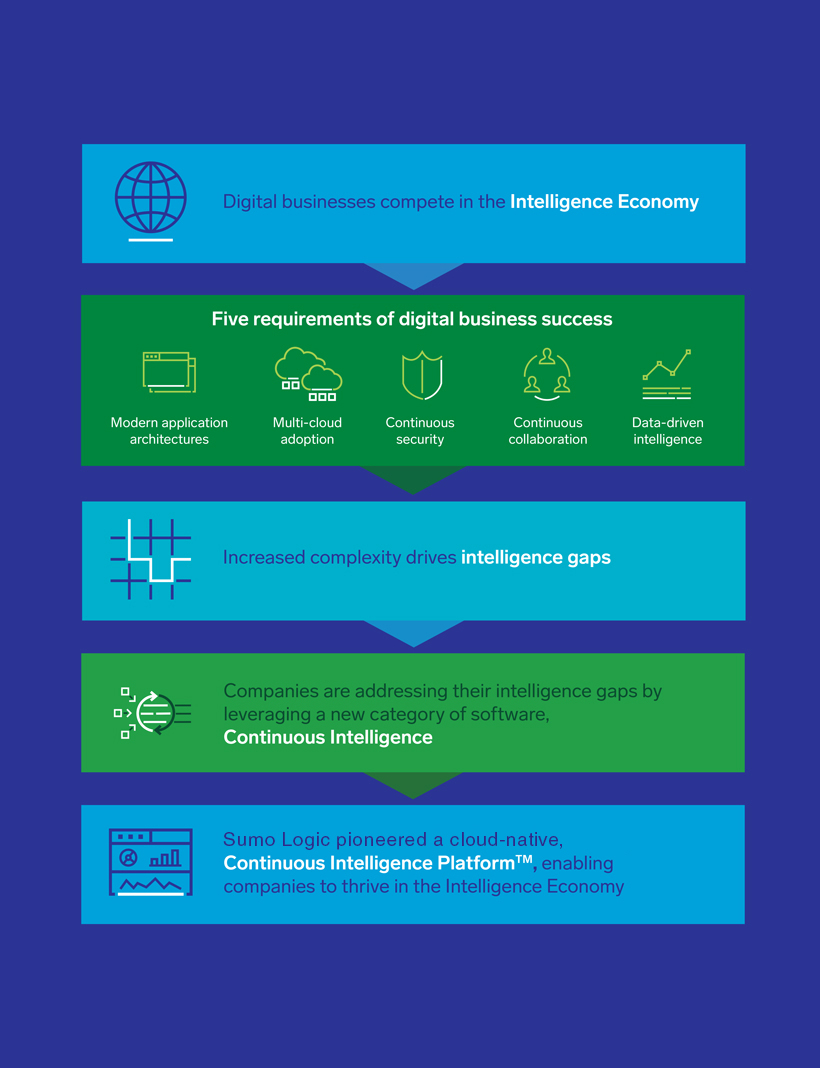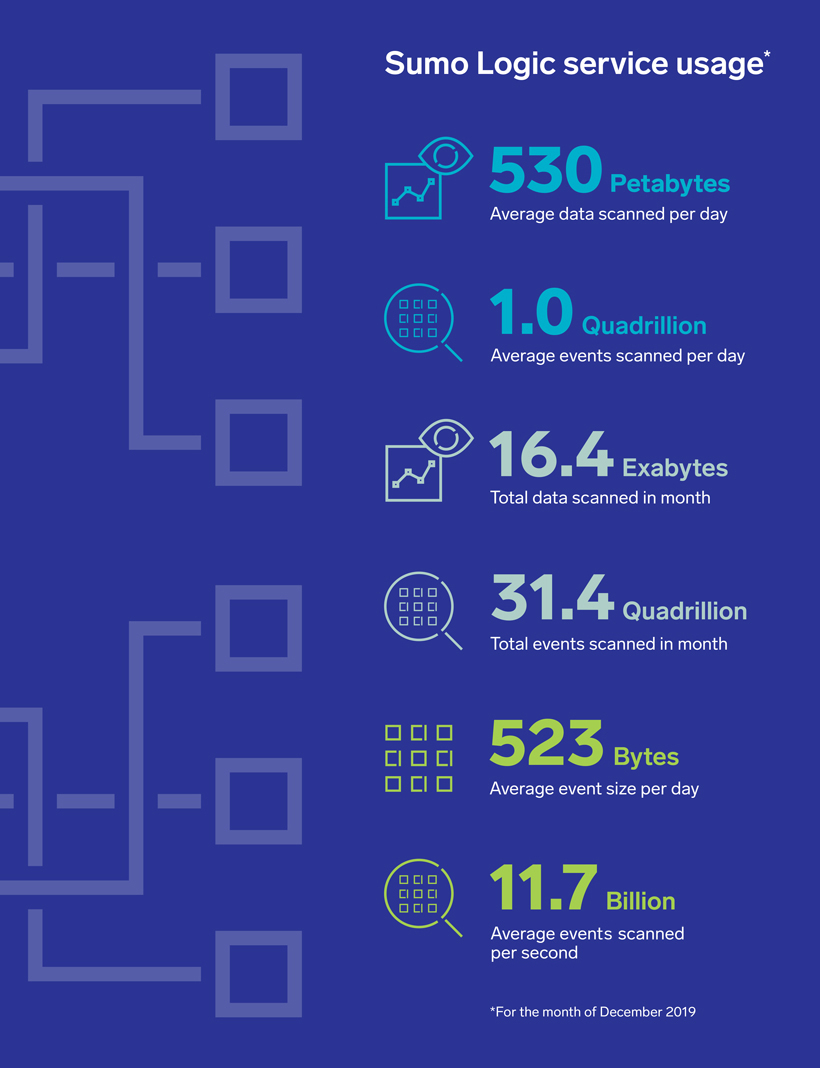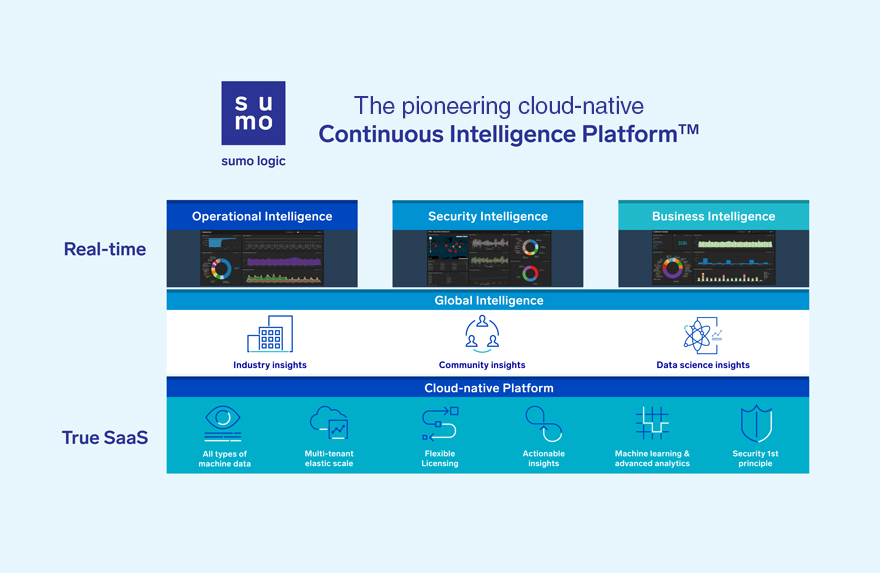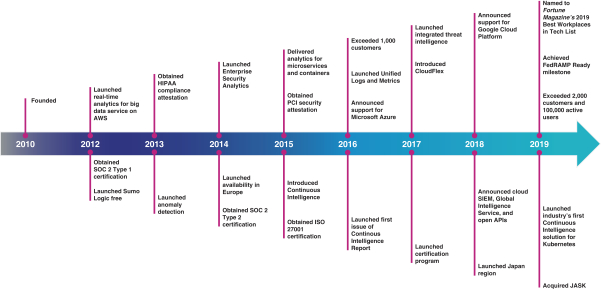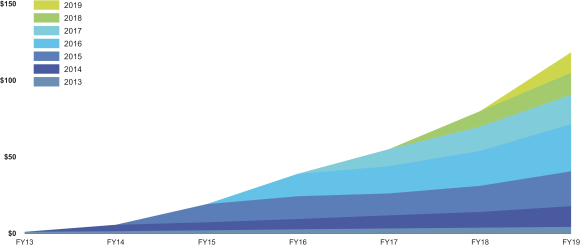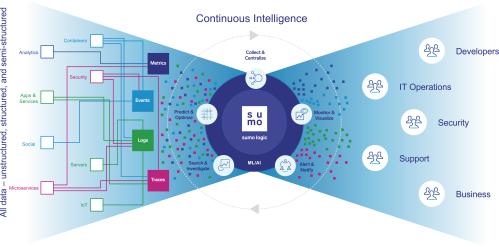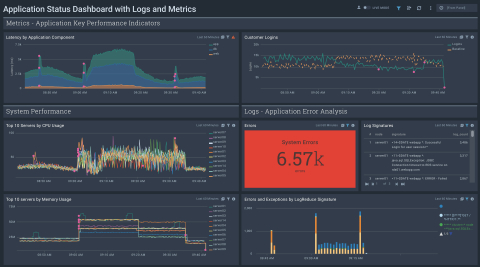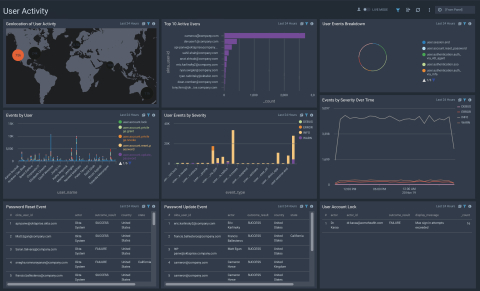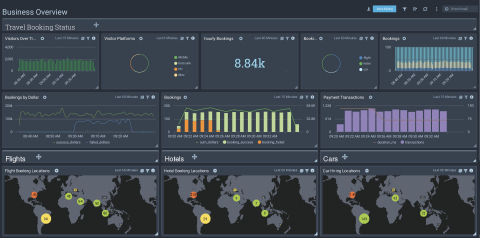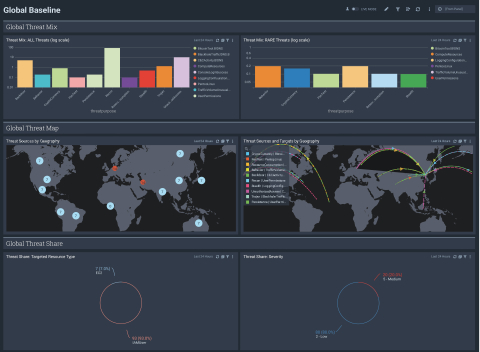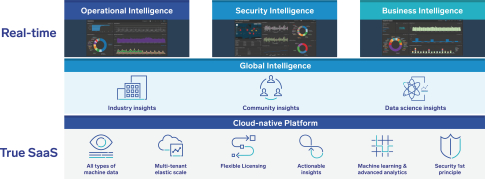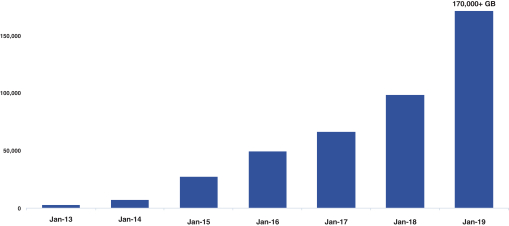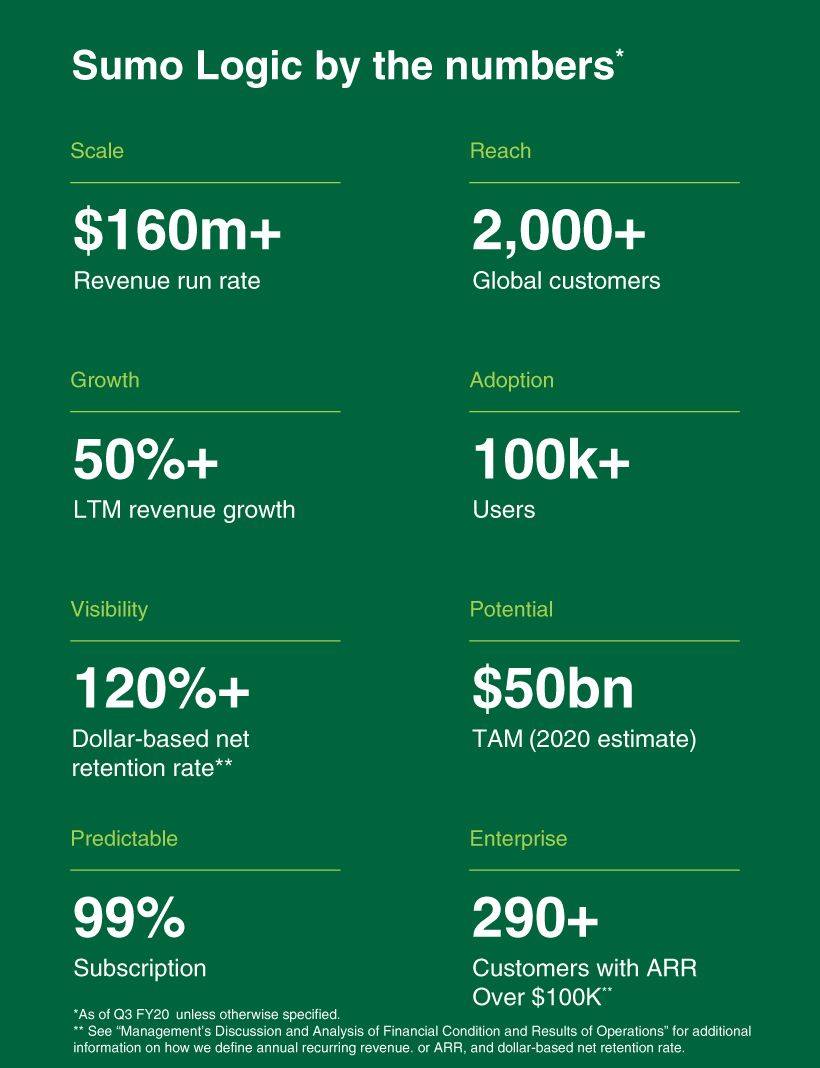analyze complex unstructured machine data, such as logs, events and security data for a cloud SIEM solution. However, we always had the vision to expand our data analytics capabilities to address less complex structured machine data, such as time-series metrics, to provide a cloud-native operational intelligence solution. In 2012, when we released our service, we discovered that developers, IT operations, and security analysts were leveraging our platform to monitor and troubleshoot their mission-critical applications, systems, and services.
Our platform scans an average of 530 petabytes of data per day and an average of 11.7 billion events per second.21 Our platform integrates and analyzes structured, semi-structured, and unstructured machine data, both historically and in real time, to provide actionable intelligence around what happened, why it happened, and how to resolve business, technology, or cybersecurity issues.
We deliberately architected and built our platform to address the technology challenges and gaps in intelligence that arise from siloed development, operations, and security teams in order to enable organizations to adopt a more modern DevSecOps operating model. DevSecOps is the philosophy of integrating security practices within the DevOps process, and involves ongoing, flexible collaboration among developers, release engineers, and security teams. DevOps is a combination of practices that automates the processes between software development and operations teams in order to build, test, and deploy modern applications faster. Ultimately, it enables teams to gain more insights and intelligence in order to release software faster, optimize processes, and better deliver digital solutions to customers. We offer a suite of solutions to address the intelligence gap: Operational Intelligence, Security Intelligence, Business Intelligence, and Global Intelligence.
We address both cloud-native businesses, as well as traditional on-premise businesses that are seeking to build, manage, and secure modern applications as they undertake their digital transformation and cloud adoption initiatives. We serve organizations of all sizes, from large enterprises to small and mid-market businesses, regardless of their cloud, digital transformation, or DevSecOps maturity. Representative customers include 23andMe, Alaska Airlines, Brown University, Land O’Lakes, LendingTree, Major League Baseball, Netflix, Petco, Pitney Bowes, Qualtrics, Twilio, ULTA Beauty, and Xero. Customers grew from 1,626 as of January 31, 2018, to 1,900 as of January 31, 2019, and to 2,087 as of October 31, 2019.22 Of these customers, 294 had ARR of $100,000 or more as of October 31, 2019.23
The power of our platform, and the benefits that it delivers to customers, has driven rapid growth in our revenue. For fiscal 2018 and 2019, our revenue was $67.8 million and $103.6 million, respectively, representing a year-over-year growth rate of 53%. For the nine months ended October 31, 2018 and 2019, our revenue was $73.3 million and $110.7 million, respectively, representing a period-over-period growth rate of 51%. We generated net losses of $32.4 million, $47.8 million, $35.3 million, and $57.6 million for fiscal 2018 and 2019 and the nine months ended October 31, 2018 and 2019, respectively, as we continued to invest in our business.
Industry Background
Nearly every business must transform into a digital business or be disrupted. Customers now expect real-time, instantaneous, always-on experiences. To meet these expectations, successful businesses need to continuously deliver updated information and improved services to their end customers, such as promotional offerings, pricing information, inventory levels, and service availability. Every business must continuously innovate.
Executives are accountable for the overall operational and financial health of the business and can no longer hide behind a gap in intelligence. This is especially true for security, as organizations must protect against breaches and reputational costs as they digitize. This accountability is not only the responsibility of executives.
| 21 | For the month of December 2019. |
| 22 | See the section titled “—Our Customers” for a description of how we calculate our number of customers. |
| 23 | See the section titled “Management’s Discussion and Analysis of Financial Condition and Results of Operations” for a description of how we calculate ARR. |
91

